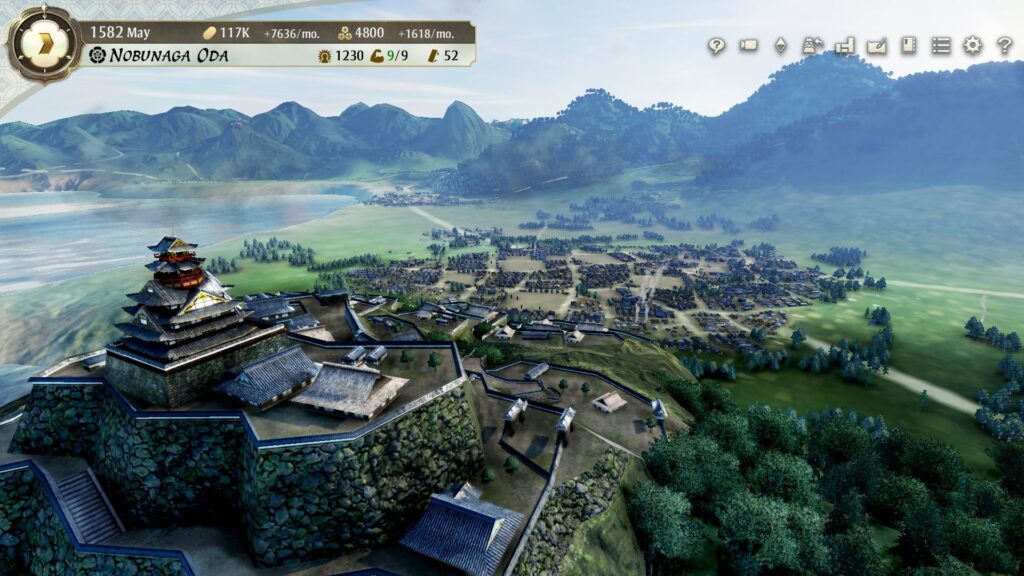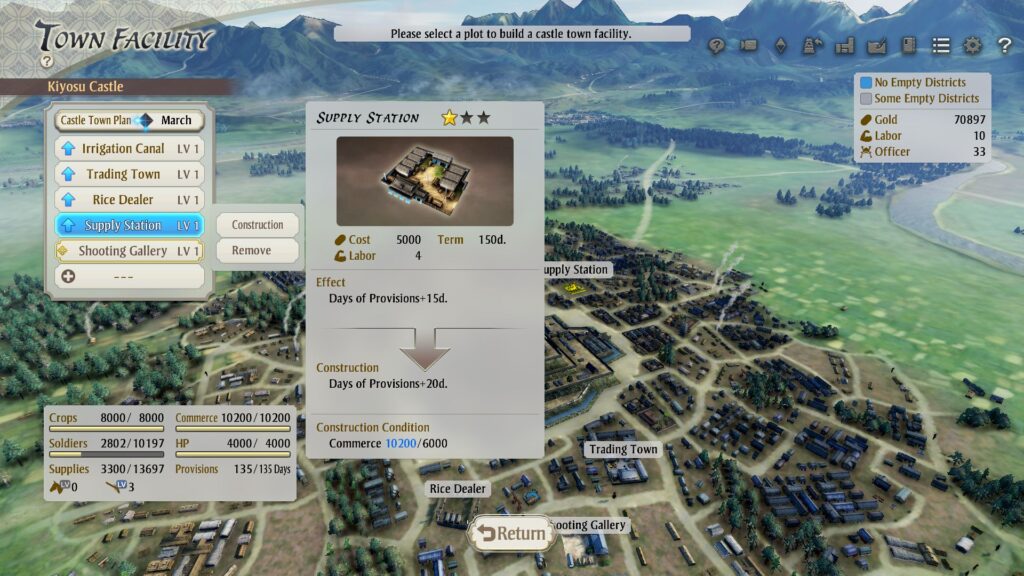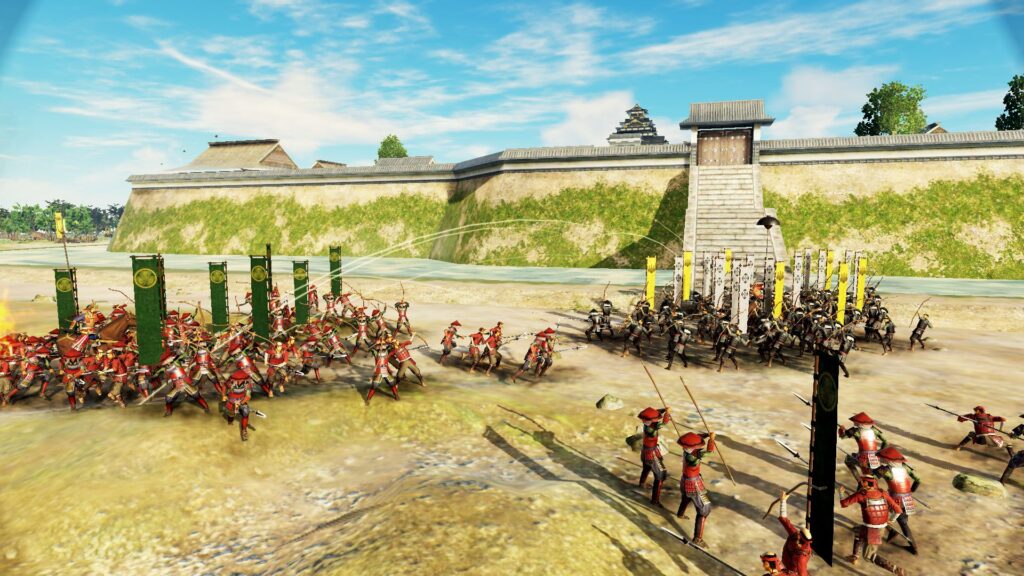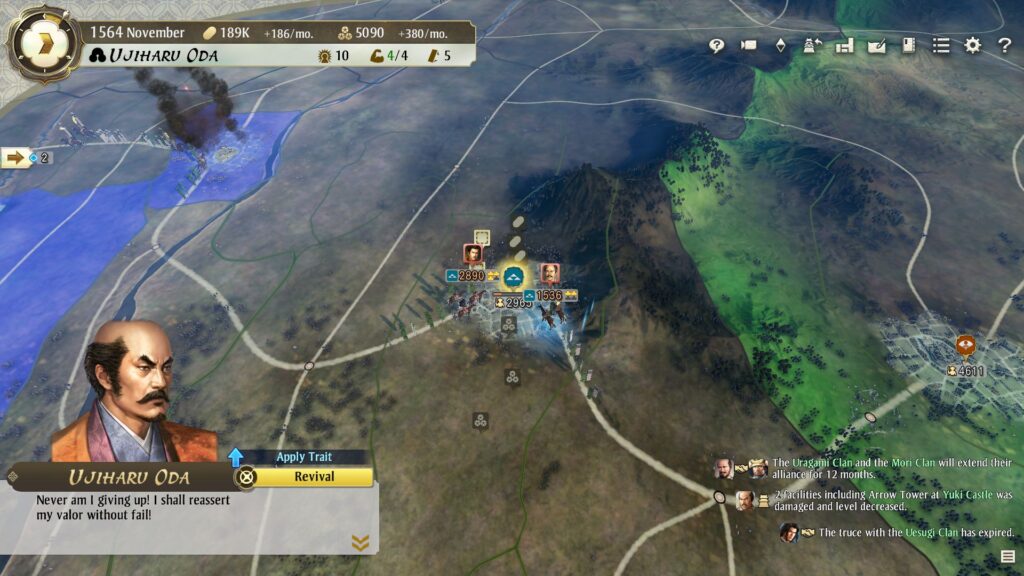Oh boy, one of the biggest historical games about Japan as a launch game, well *gulp* time to buckle up and dive deep into the system of the Japanese unification. And for those unfamiliar with the history of Japan, well, this is probably one of the most interesting periods to do a deep dive on, so let’s dive in as well, shall we?
Nobunaga’s Ambition: Awakening
So, Nobunaga’s Ambition: Awakening covers Japan’s Sengoku (“Warring States”) era with striking detail. When you launch the game, you pick a daimyo and start year, from the early wars to the climactic Battle of Sekigahara. The game prides itself on historical authenticity: each scenario’s starting conditions, a lord’s territory, armies, and retainers, match the real period’s balance. For example, choosing Oda Nobunaga puts you in a powerful position, mirroring history (contrary to the “underdog” myth). Foremost clan leaders and samurai appear with appropriate capabilities and roles, and the title even throws in episodic “Meanwhile…” news reports and forced battle encounters to evoke the era’s chaos. Iconic events (like the Siege of Kawagoe shown above) unfold with period-accurate objectives and opponents. In short, the cast of characters and campaigns feels like a living retelling of Sengoku Japan, historical figures turn up everywhere, and key battles play out as they did in real life. This deep attention to period detail, from Ashikaga shogunate politics to clan rivalries, is precisely what the Nobunaga’s Ambition series is known for, and Awakening delivers it enthusiastically. However, this comes at a cost.
Nobunaga’s Ambition revolves around several core concepts in its gameplay mechanics, primarily internal politics and economy, military strategy, diplomacy, and clan dynamics. While playing through the scenario, these are the three main key components you have to juggle to keep your clan afloat. Let’s zoom in on each one of them, shall we?
Internal Politics & Economy:
The gameplay is intensely deep and requires constant involvement (so don’t play this game while sleep-deprived). Almost every turn, you juggle assignments for dozens of retainers: appointing them to castles, directing infrastructure projects, enacting policies, and even listening to their advice. As one of my colleagues wrote about the original title (not the complete edition), “the number of things you must keep track of is staggering.” You’ll spend hours deciding which buildings to construct and which policies to prioritize. Once you get the hang of this, the whole flow of the game will change, and mastering this economic micromanagement (farms, markets, roads, taxation, etc.) is key to building a powerful domain. The UI presents this as a large “wheel” menu of options, but with dozens of stats and resources to balance, newcomers can easily feel overwhelmed initially. Fortunately, the game includes in-depth tutorials and data (even an onscreen tutorial wheel) to help you learn the ropes. However, the sheer volume of numbers and menus still leads to a steep learning curve, so don’t skip the tutorial on this one.
Military strategy
The art of war in Nobunaga’s Awakening feels both grand and straightforward. When you launch a siege on an enemy castle, you pick your available armies and send them to battle on a simple map, with helpful tips from your commanders. Battles themselves are mostly abstracted, you don’t micro-manage each unit in real time, but rather send units, assign a general, and let it play out, occasionally giving direct orders. The focus is on a larger strategy: when and where to strike, how to mobilize troops, and which battles to engage in at all. Still, combat has enough flavor to matter. Historic battles (e.g., Nagashino, Sekigahara) appear as special scenarios with their original victory conditions and terrain, as well as varied objectives. This way, Nobunaga gives the feeling of being a grand management sim rather than a real-time tactics game like Total War. This means your time is better spent raising armies, stockpiling supplies, and cutting off foes’ trade than in fast-paced button-mashing. Even so, you can field powerful samurai, hire covert operations for ambushes, or launch castle-defenses of your own; all of which keep battles interesting.
Diplomacy and clan dynamics
Just as important as war is the web of alliances, betrayals, and intrigue. Between campaigns, you trade hostages, negotiate marriages, or shake down more minor lords. Diplomacy here is surprisingly nuanced: you can demand submission, forge non-aggression pacts, or use a dedicated “negotiation table” screen to haggle deals. Retainers form the heart of your clan’s human network. Each officer has personality traits and loyalty that matter, for example, higher-ranking officers can govern cities or lead armies, while lower-ranking ones carry out menial tasks. Their confidence in your leadership is even tracked as a visible “trust” stat. As Sportskeeda puts it, there are “so many options… making allies and enemies” that your retainers’ trust and betrayals become crucial.
Meanwhile, more clandestine schemes lurk beneath the surface: you can send spies or ninja into enemy territory to disrupt economies or assassinate rivals. All of this reflects the era’s feudal intrigue, making internal politics and clan management a massive strategic layer. In practice, most of a session is spent shuffling advisers, approving city plans, and navigating court politics, and it can be overwhelming at first. Even the easier scenarios can be pretty challenging at first, and it will take a few hours for things to open up enough for the strategy to take effect. But once you’re over that hump, charting war and peace across Japan becomes deeply engrossing. But yeah, there will be a lot of trial and error in this one, or getting stabbed in the back by a once-trusted advisor, I might add.
Series comparison
For fans of the Nobunaga’s Ambition lineage, Awakening feels like the most mature entry yet. It retains the same grand skeleton, managing a domain in Sengoku Japan, but layers on more content. Compared to the previous console entry (Sphere of Influence), Awakening streamlines some base-building (fewer building types, quicker menus) but adds far greater depth elsewhere. Players report that policies (tech trees), castle systems, and especially officer ranks are far more elaborate. One community member comments that Awakening has “better-realised core ideas, officer management is deeper… diplomacy is more nuanced… war is deeper, and tactical battles deeper” than before. In short, longtime fans will recognize familiar screens, but there are many new menus and mechanics under the hood. The trade-off is more to learn: Awakening retains that signature series complexity, even more than Sphere of Influence, at the cost of simplicity. It’s better-realized, yes, but if you struggled with previous games (like me!), know that this one piles on even more systems (even while offering more tutorials). Don’t be discouraged, though. Once you pass the hill, it will be one of the best strategy sims you have played.
Technical presentation
But how does this run on the Nintendo Switch 2? Well, Nobunaga’s Ambition: Awakening carries over its PC heritage, and that shows especially in how it’s controlled. On the Nintendo Switch 2, you navigate dozens of menus and lists using only the analog sticks and buttons. This works, but it can feel clunky. Once I got the hang of the shortcuts, this became a breeze, especially with the Pro Controller and a bit of a bigger screen. etc.) Still, you can pan the map and highlight units with the sticks, but there’s no native zoom or pointer, so that targeting can be fiddly. Text, while readable, can also be relatively small in handheld mode, requiring extra zoom. In short, the game looks great (art and cutscenes evoke a shōnen anime style), but navigating that detail is slower on console. However, on Nintendo Switch 2 hardware, the Joy-Con 2 controller now includes a built-in pointer (essentially a gyro “mouse mode”), and Koei Tecmo has officially confirmed that Awakening on Switch 2 will support USB mice. A producer demonstration shows a standard mouse working in the Switch 2 version. This should finally make UI navigation far easier when it goes live. I haven’t managed to get this to work just yet, and I couldn’t find a confirmed release date for this function, so for now, I will stick to running the game with a Pro Controller or in handheld mode (and with a bit more patience).
“Nobunaga’s Ambition: Awakening isn’t just a strategy game; it’s a painstakingly detailed simulation of feudal Japan, where every decision echoes through history. It demands patience, punishes hesitation, and rewards only the most thoughtful warlords.”
Overall feel
The game features fantastic artwork, and the historical figures are brought to life with meticulous detail. I highly recommend using the Japanese voice acting with an optional English dub, but I highly encourage you to play this with subtitles instead. The map of Japan looks excellent on the Nintendo Switch 2 and pops out of your screen like a tabletop version of a War Room. The interface itself has been refined over the series (for example, tutorial pop-ups and strategy tips can help newer players get started), which helps smooth the learning curve somewhat.
Conclusion
So, to conclude! Nobunaga’s Ambition: Awakening is not a casual game; it’s a deep, sprawling grand strategy simulator that will appeal to players who love historical complexity, like me!. It delivers on its promise of letting you become a Sengoku daimyo. Fans of series like Crusader Kings, Romance of the Three Kingdoms, or Europa Universalis (or even Shin Megami Tensei’s Pokémon Conquest, on the simpler end) will find themselves at home. Recruiting powerful samurai, razing towns, forging alliances, these moments are immensely satisfying. The challenge can be daunting, and even on the lowest difficulty, it can be hard not to get yourself killed by invading territories, but that depth is precisely the point. And what makes this game tick? Well, suppose you relish micromanaging every facet of a warlord’s life; economics, politics, espionage, and war, and you have the patience to learn the systems. In that case, this game will reward you richly.
On the other hand, casual players or those put off by charts and spreadsheets may find the game unforgiving. But for its target audience, fans of Japanese history or grand strategic simulations, Nobunaga’s Ambition: Awakening stands as one of the most complete and ambitious warlord sims around. It’s dense and complex, but also one of the most authentic journeys through feudal Japan you can experience in a game.





